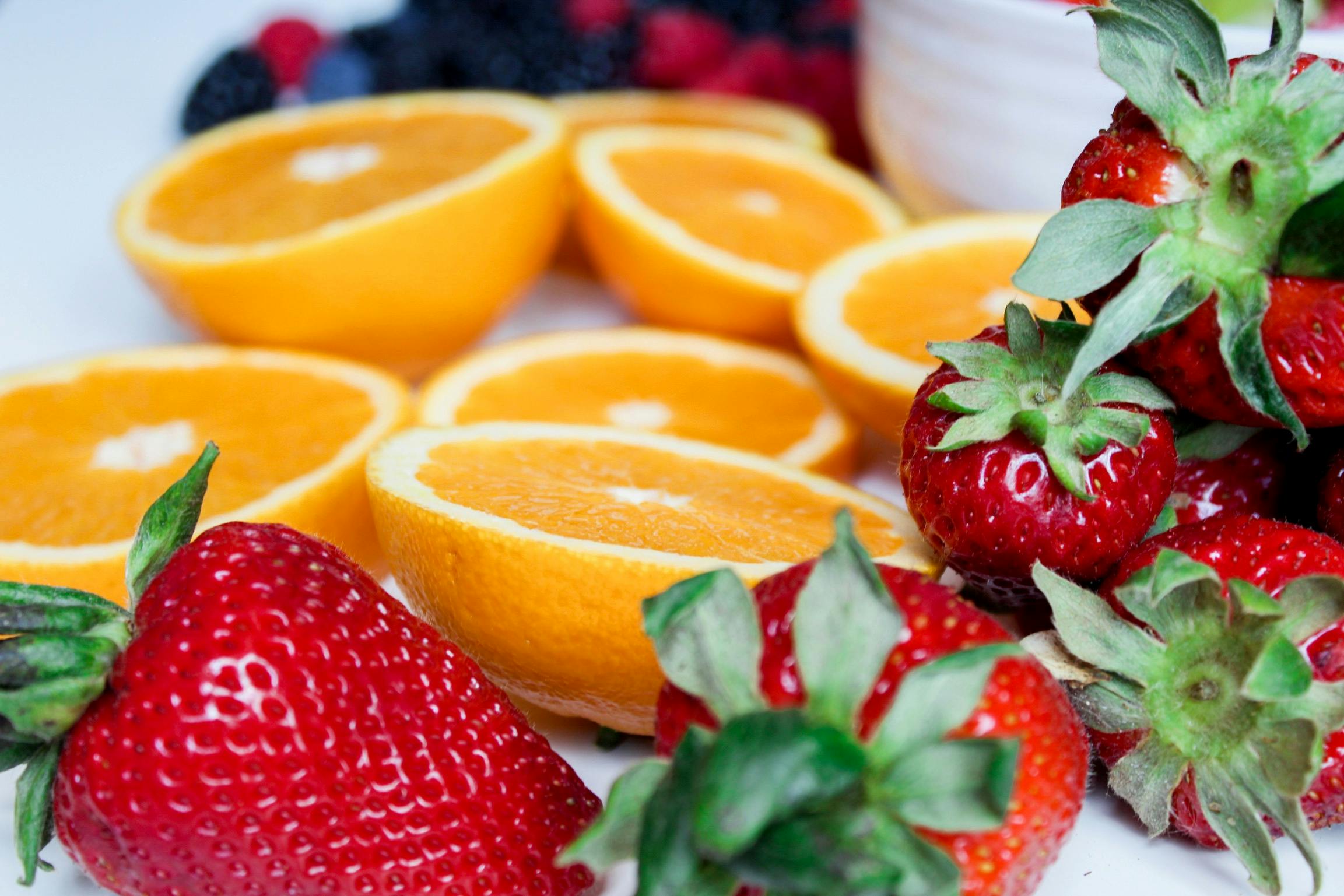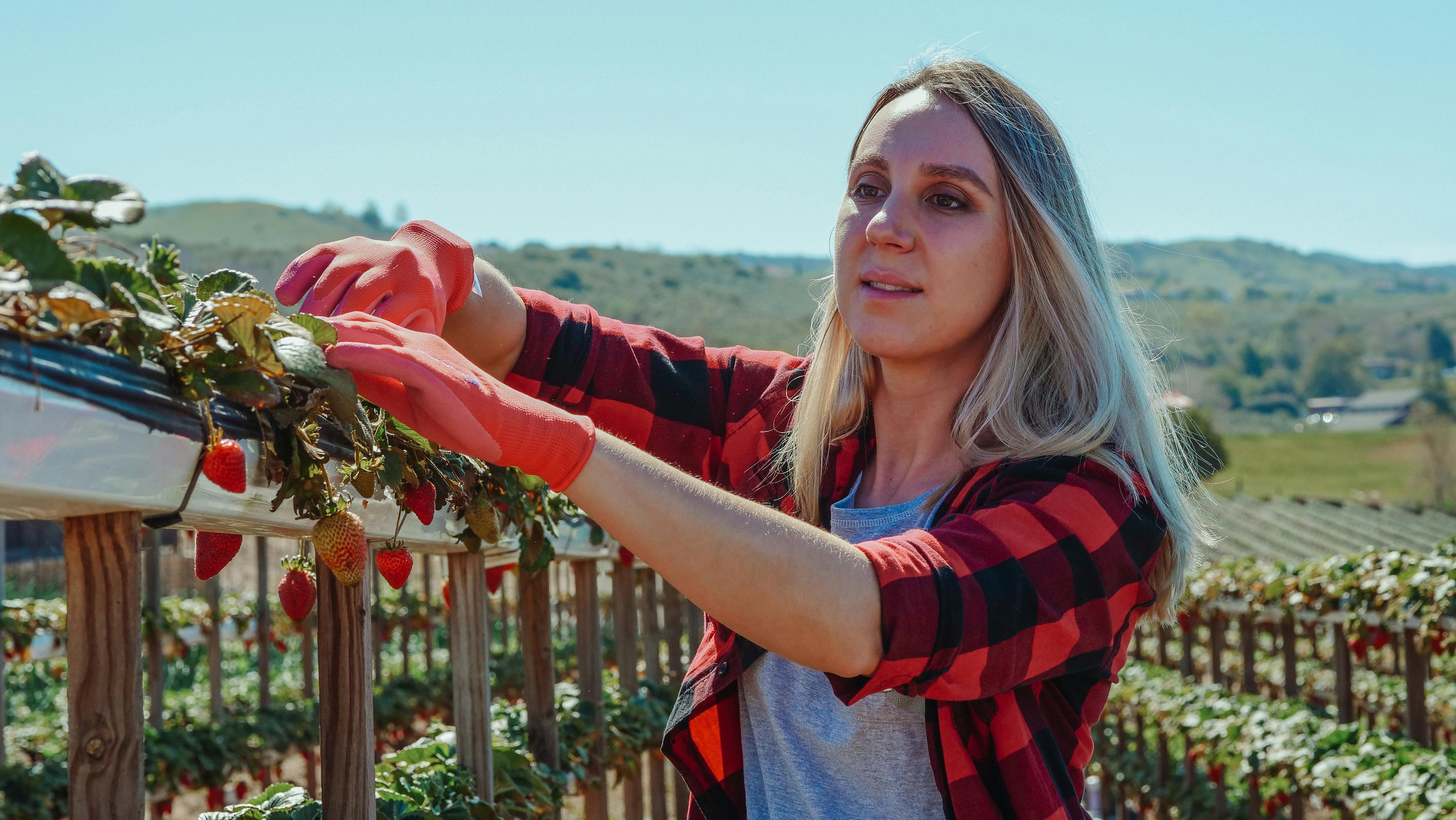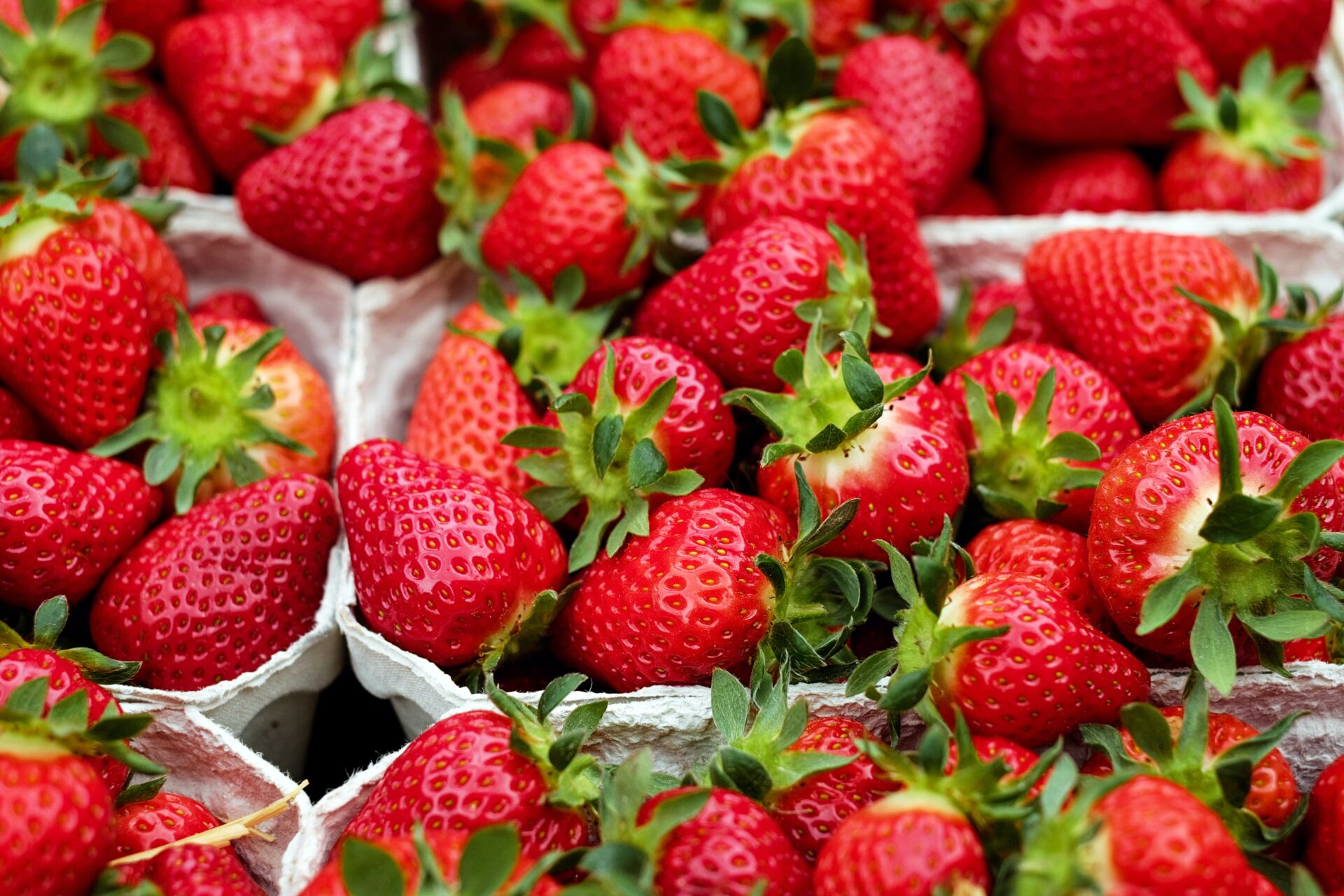If you love the sweet taste of freshly-picked strawberries, you may be wondering why your plants are not producing. It can be frustrating to invest time and energy into growing a crop of strawberries only to find that the plants are not producing the juicy berries you were hoping for. There are several reasons why your strawberries may not be producing and understanding these possible causes can help you determine what steps to take next.1. Poor Soil Quality: Strawberries require well-drained, nutrient-rich soil in order to produce healthy and abundant fruit. If the soil contains too much clay, it can reduce the amount of oxygen that the plant roots can access, resulting in fewer fruits produced.
2. Incorrect Watering: Too much or too little water can cause strawberry plants to produce fewer fruits. If the soil is kept too wet, this can lead to root rot and other diseases which will reduce fruiting. On the other hand, if the soil is kept too dry, this will also stunt the growth of the plant and limit its ability to produce fruits.
3. Pests and Disease: Several pests and diseases can affect strawberry plants, leading to reduced fruit production. These include aphids, slugs, birds, gray mold, verticillium wilt and crown rot. All of these should be controlled as soon as possible in order to protect and maximize fruit production.
4. Lack of Pollination: Strawberries need to be pollinated in order for them to produce fruit properly. If there are not enough bees or other pollinators in your area then this could result in less fruit produced by your strawberry plants.
Potential Causes of Low Strawberry Production
Strawberry production is vital to the agricultural industry and its decline can have serious economic implications. There are a number of potential causes for low strawberry production, including environmental factors, inadequate pollination, and poor soil fertility.
Environmental Factors
Environmental conditions can greatly affect strawberry production. Too much or too little sunlight or rainfall can cause the berries to be small and misshapen or fail to ripen properly. Extreme temperatures can also damage the plants either directly or indirectly through increased pest activity. Additionally, prolonged periods of drought may lead to reduced soil moisture levels, which can inhibit growth and reduce yields.
Inadequate Pollination
Pollination is essential for strawberry production as it allows fertilization of the flowers and thus development of berries. Poor pollinator health due to a lack of nutrition, habitat loss, or disease can result in inadequate pollination and thus lower yields. Additionally, certain environmental conditions such as extreme cold temperatures may reduce bee activity and limit pollination effectiveness.
Poor Soil Fertility
Soil fertility is also an important factor in strawberry production as plants rely on nutrient-rich soils for optimal growth. Nutrient deficiencies may lead to smaller fruit size and reduced yields while soil compaction may reduce water infiltration rates and decrease plant growth. Furthermore, excessive amounts of certain nutrients such as nitrogen may cause nutrient imbalance within the soil which could limit berry development.
Diagnosing Low Strawberry Production
Diagnosing the cause of low strawberry production can be a difficult task because there are many potential causes. The first step in diagnosing low strawberry production is to determine if the plants are receiving adequate nutrition. If not, then correct fertilizer applications may be necessary. Additionally, soil testing should be conducted to ensure that the soil pH is optimal for strawberry growth. It may also be beneficial to apply micronutrients such as iron, manganese, and zinc to the soil.
Next, it is important to check for signs of pests or diseases that may be affecting the health of the strawberries. Common pests include aphids, thrips, and spider mites. Diseases such as gray mold and powdery mildew can also damage plants and reduce fruit yield. If pests or disease are present, then it is important to take appropriate action in order to control their spread and protect the health of the plants.
Finally, it may also be beneficial to check for any environmental factors that could potentially affect strawberry production. Temperature extremes can limit photosynthesis and limit growth and fruiting potentials. Additionally, too much shade or too little water can also affect plant health and reduce yields. By taking steps to address these environmental issues, growers can help improve their yields and ensure healthy crop production.
Improving Soil Quality for Strawberry Production
Soil quality is an important factor in the production of strawberries. Poor soil quality can lead to decreased yields and reduced overall plant health. Therefore, it is important to take steps to improve soil quality prior to planting. This can be done through a variety of methods, including adding organic matter, increasing drainage, and adjusting pH levels.
Adding organic matter such as compost, manure, or other materials is one of the best ways to improve soil quality for strawberry production. Organic matter will help to increase the overall fertility of the soil by providing essential nutrients that strawberries need in order to grow and produce healthy fruits. Additionally, organic matter helps to improve drainage and aeration which is important for strawberry roots to access oxygen and water.
Increasing drainage can also help improve soil quality for strawberry production. Poorly drained soils can cause root rot and other diseases which can reduce yields and diminish overall plant health. By adding material such as sand or gravel into the soil profile, you can help ensure that water drains away quickly after heavy rains or irrigation events.
Finally, adjusting pH levels is another way to improve soil quality for strawberry production. Strawberries prefer a slightly acidic soil with a pH between 5.5 and 6.5. If your soil has a higher pH level than this range then you may need to add amendments like sulfur or aluminum sulfate in order to lower it down into the optimal range for strawberry growth.
By taking steps such as adding organic matter, increasing drainage, and adjusting pH levels you can greatly improve the overall soil quality for strawberry production in your garden or farm field. Doing so will help ensure that your plants have all the necessary nutrients they need in order to thrive and produce healthy fruits throughout the season!
Ensuring Optimal Water Levels for Strawberries
Strawberries are one of the most popular fruits, and they grow in warm climates around the world. However, to ensure optimal growth and a high-quality crop, it is important to maintain optimal water levels for strawberries. Too much or too little water can lead to poor yields and reduced quality. To ensure the best results, it is essential to monitor water levels in strawberry fields and adjust accordingly.
The amount of water needed by strawberries will vary depending on climate and soil type. In general, strawberries prefer moist but well-drained soils that have good drainage. In hot weather, watering may be necessary every day or every other day, depending on how quickly the soil dries out. In cooler weather, watering may only be necessary once a week or even less often.
Another factor to consider when determining optimal water levels for strawberries is irrigation system type. Drip irrigation is generally considered the best for strawberry plants as it allows for better control over how much water is delivered directly to the roots of the plant. Sprinkler systems are also an option but can lead to evaporation and run-off, resulting in less efficient use of water resources.
Finally, it is important to note that watering too much can be just as damaging as not watering enough. Overwatering can lead to root rot or reduce fruit quality due to high humidity levels in the soil. To ensure optimal results, it is best to monitor soil moisture levels regularly and adjust watering accordingly. This will help ensure maximum yields from your strawberry crop while helping conserve precious water resources at the same time.

What Temperature and Sunlight is Best for Strawberries?
Strawberries are a delicious and versatile fruit, commonly grown in gardens or on larger farms. The optimal temperature and sunlight for growing strawberries depends on the variety of strawberry being grown, as some varieties thrive in cooler climates while others thrive in warmer climates.
When it comes to temperature, strawberries prefer to be kept between 50°F and 60°F (10°C and 15°C). If temperatures drop below 40°F (4°C) or above 75°F (24°C), the plants can become stressed. For areas with cold winters, it’s best to cover the strawberry plants with a layer of straw or mulch to insulate them from frost.
Sunlight is also important for strawberry plants, as they need 6-8 hours of direct sunlight each day in order to produce healthy fruit. If the sun is blocked by tall buildings or trees, supplemental lighting may be needed.
Overall, when growing strawberries it’s important to make sure that they get enough sunlight and are kept at an optimal temperature range. With proper care, you can enjoy a bountiful harvest of sweet strawberries!
The Role of Fertilizer in Increasing Strawberry Production
Fertilizer plays a critical role in increasing strawberry production and improving its quality. Fertilizers are essential for providing the right mix of nutrients that are necessary for plant growth and development. They provide an adequate supply of nitrogen, phosphorus, and potassium to promote healthy growth and fruit size. Fertilizers also help maintain the levels of other essential minerals such as magnesium, calcium, and sulfur. Applying the right amount of fertilizer at the right time is important for achieving maximum yields from strawberry crops.
When using fertilizer for strawberries, it is important to understand the nutrient needs of the crop. Different varieties of strawberries have different nutrient requirements, so it is important to choose a fertilizer blend that is specific to the variety being grown. It is also important to consider soil type when selecting a fertilizer blend; some soils may require more nitrogen or phosphorus than others. Additionally, soil pH should be taken into consideration when deciding which type of fertilizer to use in order to ensure maximum nutrient uptake by plants.
The timing and method of application are also essential when using fertilizer for strawberry production. Generally speaking, it is best to apply fertilizer during periods of active growth such as early spring or late summer/autumn. It is important to avoid applying too much or too little fertilizer as this can lead to nutrient deficiencies or an excess buildup which can be detrimental to plant health and reduce yields. Additionally, fertilizers should be applied evenly across the entire field in order to ensure that each plant receives an adequate supply of nutrients.
In conclusion, fertilizers play an important role in increasing strawberry production by providing plants with essential nutrients that promote healthy growth and fruit size. It is important to select a fertilizer blend that is specific to the variety being grown as well as taking into consideration soil type and pH levels when deciding which type of fertilizer will be most beneficial for achieving maximum yields from strawberry crops. Additionally, proper timing and methods of application must be followed in order for plants to receive an adequate supply of essential nutrients without overloading them or causing any nutrient deficiencies that could negatively impact plant health and yields.
Controlling Pests and Diseases Affecting Strawberries
Strawberries are a popular fruit consumed all over the world, but they can be affected by a variety of pests and diseases. These pests and diseases can cause significant damage to strawberry crops if left unchecked. It is important to take steps to prevent and control these pests and diseases in order to ensure a healthy harvest.
One of the most common pests affecting strawberries is the strawberry weevil (Anthonomus rubi). This pest feeds on the foliage of strawberry plants, reducing their productivity. The best way to manage this pest is to use insecticides. There are also some cultural practices that can help reduce its population, such as removing affected plants, cultivating weeds around the crop, and maintaining good sanitation practices.
Diseases are also a major problem for strawberries. Common diseases affecting strawberries include gray mold (Botrytis cinerea), verticillium wilt (Verticillium dahliae), and powdery mildew (Podosphaera aphanis). These diseases can cause significant damage to strawberry crops if left unchecked. The best way to manage these diseases is through preventive measures such as crop rotation, sanitation, and using disease-resistant varieties when possible. Fungicides can also be used if necessary.
In summary, controlling pests and diseases affecting strawberries is essential for achieving good yields from strawberry crops. Insecticides can be used for managing insect pests such as the strawberry weevil while preventive measures like crop rotation and sanitation should be used for managing fungal diseases like gray mold, verticillium wilt, and powdery mildew. Disease-resistant varieties may also be used when available.

Conclusion
Strawberry plants require adequate sunlight, water, soil nutrients, and proper care to produce a good yield of fruit. If any of these conditions are not met, the plant may not produce a good crop. It is important to test the soil for pH and nutrient levels to make sure that it is suitable for growing strawberries. In addition, it is important to provide the plants with adequate water and sunlight. If the plants are not receiving enough nutrients, water, or sunlight, then they may not produce a good crop of fruit. Finally, it is important to pay attention to the signs that your strawberry plants are giving off in order to ensure they remain healthy and productive.
In conclusion, if your strawberries are not producing as expected, it may be due to inadequate conditions such as lack of sunlight or poor soil quality. Testing the soil for pH and nutrient levels is an effective way to determine if your strawberry plants need additional care in order to produce a good yield of fruit. Other factors such as inadequate watering or lack of sun can also contribute to why your strawberries might not be producing as expected. Taking steps to address these issues can help ensure that you have a successful crop of strawberries!



